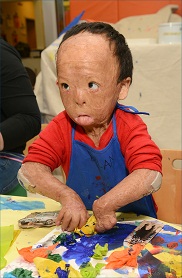- Doctors & Departments
-
Conditions & Advice
- Overview
- Conditions and Symptoms
- ¿Está enfermo su hijo?
- Parent Resources
- The Connection Journey
- Calma Un Bebé Que Llora
- Sports Articles
- Dosage Tables
- Baby Guide
-
Your Visit
- Overview
- Prepare for Your Visit
- Your Overnight Stay
- Send a Cheer Card
- Family and Patient Resources
- Patient Cost Estimate
- Insurance and Financial Resources
- Online Bill Pay
- Medical Records
- Política y procedimientos en el hospital
- Preguntamos Porque Nos Importa
-
Community
- Overview
- Addressing the Youth Mental Health Crisis
- Calendar of Events
- Child Health Advocacy
- Community Health
- Community Partners
- Corporate Relations
- Global Health
- Patient Advocacy
- Patient Stories
- Pediatric Affiliations
- Support Children’s Colorado
- Specialty Outreach Clinics
Your Support Matters
Upcoming Events
Colorado Hospitals Substance Exposed Newborn Quality Improvement Collaborative CHoSEN Conference (Hybrid)
lunes, 29 de abril de 2024The CHoSEN Collaborative is an effort to increase consistency in...
-
Research & Innovation
- Overview
- Pediatric Clinical Trials
- Q: Pediatric Health Advances
- Discoveries and Milestones
- Training and Internships
- Academic Affiliation
- Investigator Resources
- Funding Opportunities
- Center For Innovation
- Support Our Research
- Research Areas

It starts with a Q:
For the latest cutting-edge research, innovative collaborations and remarkable discoveries in child health, read stories from across all our areas of study in Q: Advances and Answers in Pediatric Health.


Dylan: Learning to Be a Kid Again
Imagine if you weren't able to hold your 14-month-old child. If you couldn't cradle them. If you weren't able to kiss them. How would you bond with your toddler or comfort them?

For Angelica Saucedo, that tragic scenario was a reality.
"We couldn't touch him or hug him," said Angelica recounting the difficult months following her son Dylan's life-threating accident on Christmas Eve two years ago. Dylan, who was just over a year old at the time of the injury, suffered severe burns to his face and most of his body after an accident at home.
After the accident, firefighters arrived at the scene and performed CPR on Dylan and he was rushed to the Emergency Department at Children's Hospital Colorado Anschutz Medical Campus, Aurora. Doctors there told Angelica that Dylan probably would have died if he reached the hospital just a bit later.
For the next five months, Dylan lived at Children's Colorado being treated for his burns. When he was released from the hospital and returned home, his recovery was just beginning and he couldn't stand or even sit up on his own. It was around this time that the burn team at the hospital referred Dylan to Children's Colorado KidStreet, Aurora.
KidStreet, Aurora
Children's Colorado KidStreet, Aurora is a multidisciplinary rehabilitation care facility that serves children ages 6 weeks to 4 years old who require daily nursing care and have complex medical needs. The facility is staffed by a bevy of pediatric care specialists, including registered nurses, occupational therapists, physical therapists, certified teachers and speech language pathologists, among others. KidStreet is funded by a state health program for low-income families and parents/guardians aren't billed for the care their children receive there.
Dylan's family was initially hesitant to send him to Children's Colorado KidStreet, Aurora for treatment for a number of reasons. "His mom was afraid of how other kids would react to Dylan because of his appearance." said Karen Terry, RN, clinical manager at KidStreet.
When Dylan began treatment, he was quiet and reserved. "He'd been to hell and back and had to start over with so many things," said Terry. He had to learn to crawl again and he didn't like talking because it was painful.
Dylan began to open up after starting treatment at KidStreet according to both his mom and caregivers. His interactions with other kids at the facility and his treatments increased his confidence and lessoned the fear and shyness he developed after the accident.
"He doesn't have as many trust issues as he did at first," remarked Laura Muenstermann, RN, a clinical nurse at KidStreet. "You'd literally have to pry him off of his mom when he first began treatment." And now? "He's a real jokester and he loves playing hide and seek," said Muenstermann.
Painting is Dylan's therapy
Painting was one of the many therapies that helped Dylan break out of his shell. Michele Turek, an art therapist with the Ponzio Creative Arts Therapy Program at Children's Colorado, worked with KidStreet patients earlier this year on the The Hive, a project she created in which patients paint and decorate hexagonal canvases that she later displays together to showcase how individuals touch one another lives in a community. It was a fitting metaphor for Dylan, who was learning to reconnect with his peers and explore the world anew through therapy.
"He just took off and didn't want to stop," said Turek describing how Dylan reacted when given a paintbrush. "He was very specific about what he wanted to paint and where he wanted it."
Dylan is flourishing today and will finish treatment next summer. Although the scars from his accident will be with him for life, he has learned to be a kid again, thanks in part to the care and treatment he received.
"KidStreet has helped him so much," said Angelica. "It's like our second home now; it's another family."



 720-777-0123
720-777-0123



